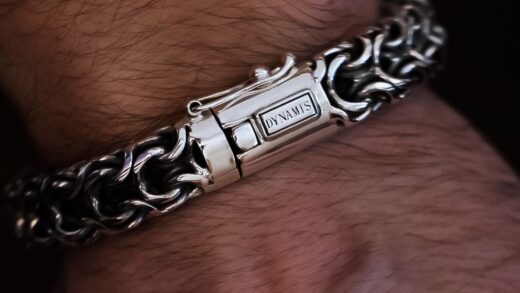If you’re thinking of wearing jewelry to bed, think again. Wearing jewelry while you sleep can create indentation marks and tangles in your hair or bedding, resulting in choking hazards and circulation problems. Plus, you increase your chances of losing jewelry while you’re asleep, which is especially tricky for stud earrings. Not only can they be difficult to find, but they can also get tangled in your sheets.
Avoiding metals that are added to jewelry
Using cadmium-free earring tips is an excellent way to protect your sensitive skin when wearing jewelry to bed. This metal has similar chemical properties to mercury and zinc and should be avoided in all circumstances. It is also toxic and is classified by the International Agency for Cancer Research (IARC) as a possible carcinogen. Because of its harmful effects on the body, the metal is banned in the European Union and California. It is also used in fashion jewelry as a coating and to improve fluid properties.
If you are allergic to nickel, you should avoid wearing earring that contains it. People allergic to nickel usually develop a rash when they come in contact with the metal. These symptoms do not last long, but can occur within four weeks after the exposure. If you do have a nickel allergy, look for jewelry that is marketed as nickel-free. If you’re unsure of whether the metal is safe for you, check its packaging. Nickel-free earring designs are safer than stainless steel ones.
Avoiding rings that are shaped like fingers
Rings are dangerous when worn at night because they can disrupt blood flow to the fingers. Wearing rings overnight can result in finger deformities. Also, loose jewelry is less likely to accumulate bacteria on the skin. Thus, it is best to remove ring-shaped jewelry before going to bed. This can prevent ring-related health issues. Moreover, you can avoid bed-related complications such as skin irritation and infections.
Rings that resemble fingers are also inappropriate to wear in bed. Perspiration can irritate the skin and interact with some medications. Therefore, wearing them while sleeping can be hazardous. Even worse, it could even cause a reaction that may lead to blisters. So, avoid wearing rings shaped like fingers if you have sensitive skin. Even though these rings may be comfortable to wear, you shouldn’t try wearing them at night.
Moreover, removing rings before bed can also cause snagging of hair and face. If your ring has prongs that can scratch your face, you should take it off before going to bed. Otherwise, it’s okay to wear them if they’re comfortable. Just make sure that you clean them before you wear them to sleep. A safe way to wear jewelry in bed is to wear it if it’s comfortable to you.
Avoiding tangled necklaces
Wearing jewelry to sleep is never an ideal situation, and a tangled necklace is the worst of all. Luckily, there are a few simple solutions. Firstly, avoid wearing necklaces of the same length and weight. Necklaces that are lighter and daintier will be less likely to tangle. Also, consider wearing a thicker necklace than one that is lightweight. This way, you will reduce the risk of tangles by allowing the necklace to move around your neck. Lastly, try layering your necklaces if you wish to avoid tangling.
It’s always a good idea to store your jewelry carefully. Even if you prefer to wear a necklace in a case or a jewelry box, keep it in a special place for safekeeping. Everyday products like lotion, perfumes, and shampoos can cause tangles. Another solution is using a necklace spacer. Lastly, if you cannot afford a jewelry organizer, you can always buy a small dish and hang your necklaces on it.
As you can see, wearing a necklace to bed can be a dangerous practice. If you sleep in a room where you can’t see your jewelry, you’re likely to wake up with a painful tangle. A 24-inch-long chain can easily strangle you. Luckily, there’s no medical evidence to support these fears. Nonetheless, it’s always a good idea to remove your jewelry before going to bed.
Taking the time to untangle your necklace before bed is especially important if you are a light sleeper. Taking your necklace off before bed will prevent it from disturbing your sleep. You’ll be more comfortable if you don’t wear unnecessary accessories to bed. Furthermore, you’ll avoid rash-causing skin irritation by removing your necklace. So, avoiding tangled necklaces should be a top priority!
Avoiding bras
If you want to avoid the embarrassing feeling of having to undress when you’re in bed, avoid wearing a bra. Underwire bras are especially troublesome because they can throw off the magnetic field. A sports bra or hospital gown will do the trick. Regular bras with clasps on the back are fine, but you should avoid any bras with metal parts on the straps. Metal flakes, gel, or wet hair can also throw off the magnetic signal.
In addition to skin irritation, a bra can lead to unpleasant body odor and acne. Some women find wearing bras uncomfortable, which interferes with sleep. To avoid these problems, you should always take off your bra before going to bed. This way, you can have a good night’s sleep without worrying about the odor and uncomfortable sensation. However, even if you love wearing a bra, you should still avoid wearing it to bed.
Women with large breasts may want to avoid wearing a bra when going to bed. This option is often recommended by many women who find that it is less painful than wearing a bra. Some women opt to wear a sports bra almost all the time. Aside from preventing backache and leaking, it can also prevent breast pain. And if you’re a sports lover, you may be interested in J Bamford-Love’s new sports bra.
The decision to wear a bra before going to bed is a personal one, and only you can make this decision for yourself. You may find that wearing a bra prevents breast sagging when you’re asleep, but it’s not a good idea for your health. A tight bra can restrict your circulation and put unnecessary pressure on your chest, making it hard to breathe during the night. So, it’s better to be safe than sorry.
Avoiding magnetic jewelry
Wearing magnetic jewelry to bed can affect the health of many people. It may interfere with the functioning of a pacemaker or cerebrospinal fluid shunt. It can also harm a baby, who may swallow broken pieces. Ideally, magnetic therapy jewelry should be removed before going to bed. However, there are situations where it is absolutely necessary. These include: pregnant women, newborns, and people with heart conditions.
If you do wear magnetic jewelry to bed, be sure that it is comfortable. Whether you are wearing a bracelet, necklace, or earrings, it is important to select jewelry that fits properly. Before buying a magnetic piece of jewelry, measure your wrist and ankle circumferences and order accordingly. Make sure that you order the correct size, and do not buy an extra-large one. Magnetic jewelry should be removed from your body for at least two hours before bedtime.
Magnetic products should not be worn by pregnant women or people with pacemakers. Also, it should not be worn near a digital watch or a credit card. They may interfere with the functions of these devices. It is also important to remember that magnetic products should not be worn near any appliance. They may interfere with a pacemaker, insulin pump, or other medical device. Therefore, magnetic jewelry should not be worn to bed unless you consult a doctor.


